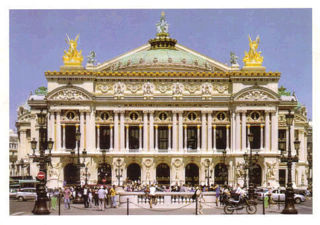Difference between revisions of "Paris"
(ââSee also) |
MikeSalter (Talk | contribs) |
||
| Line 74: | Line 74: | ||
[[Category:French Cities and Towns]] | [[Category:French Cities and Towns]] | ||
| + | [[Category:Capital Cities]] | ||
[[Category:Tourist Attractions]] | [[Category:Tourist Attractions]] | ||
Revision as of 16:03, January 18, 2009
For Paris from the Trojan War please click here
Paris is the capital and largest city of France. It is situated on the River Seine. The population of the Greater Paris urban area is approximately 10 million, or almost one-sixth of the total population of France, with over 2.1 million in the city of Paris itself.
History
As with many other important cities in Europe, the Romans set up a military outpost (52 B.C.) on the location that would one day become Paris. In the 6th century A.D., King Clovis I established Paris as his capital. This was confirmed when Huge Capet became king of France in 987 A.D. Growth increased under the reign of Philip II (1180-1223) and Paris remained the capital when Louis XIV set up his court in Versailles in 1682. The Germans occupied Paris in World War II. It was liberated near the end of the war, but was largely undamaged.[1]
Famous Paris landmarks include:
- Eiffel Tower
- Arc de Triomphe
- Louvre
- Notre Dame cathedral, which was the setting for Victor Hugo's novel, The Hunchback of Notredame.
- Place de la Concorde
- The Champs-Ãlysées
- Opera Garnier
- Sacre Coeur
- Montmartre
- Place de la Bastille
- Montparnasse
- Quartier Latin
- Ãglise de la Madeleine
- The Panthéon
- Centre Georges-Pompidou
Urban Unrest
Some of the suburbs around Paris (les banlieues), especially to the northeast, are known for large apartment blocks, housing many of the latest Muslim immigrants to France. These have been rocked by violence as youths rioted against the alleged intolerance of the police forces.
See also
External links
References
- â The New American Desk Encyclopedia, Penguin Group, 1989












